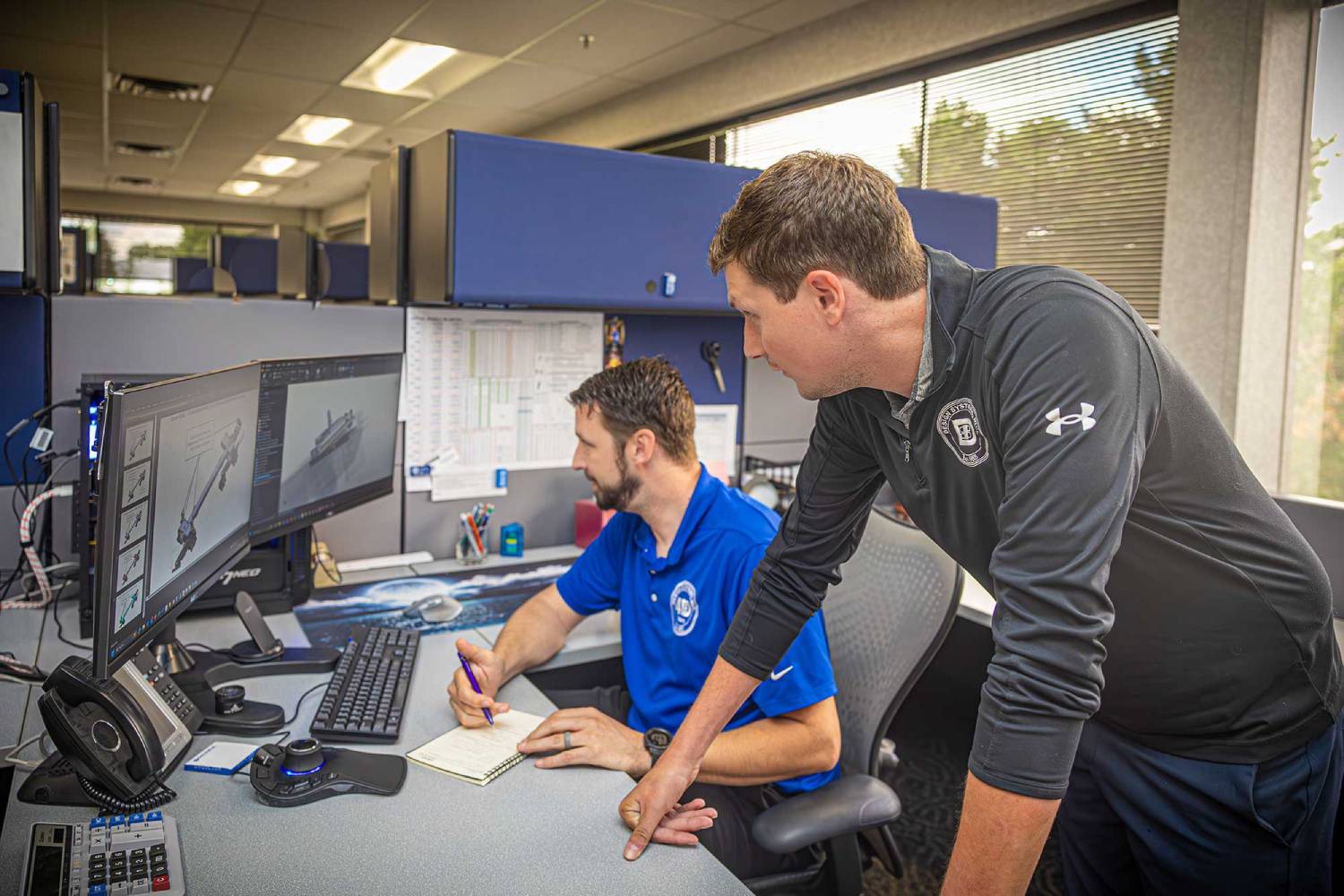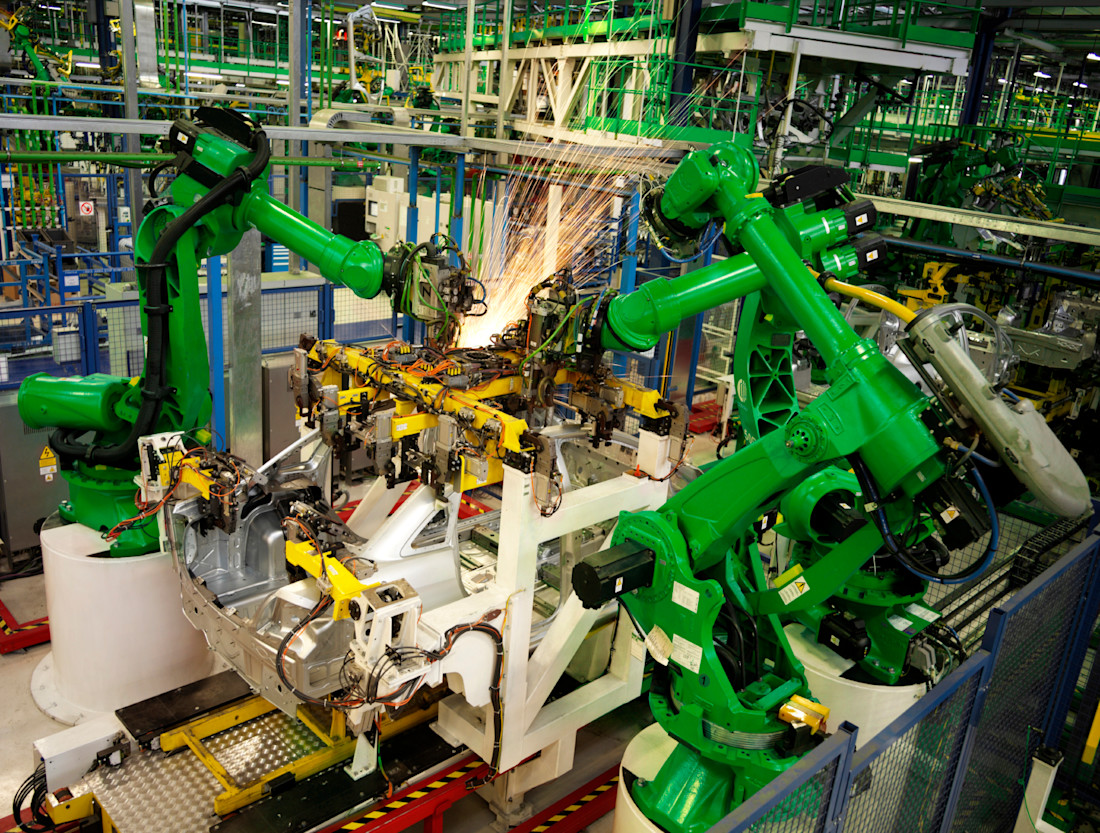The Strategic Advantage of Failure Analysis
6 min read
October 20, 2025

When you hear the term failure analysis, what comes to mind? For many leaders in manufacturing and engineering, it probably sounds like a reactive, after-the-fact process—something you do once a major failure has already occurred. You might envision a team of engineers sifting through broken parts, trying to figure out what went wrong.
While that's certainly part of it, we’re here to challenge that perception and show you how a strategic approach to failure analysis can be one of your most powerful tools for competitive advantage.
At Design Systems, we see failure analysis not as a post-mortem, but as a critical, proactive component of strategic planning. Instead of simply fixing a broken product or machine, it’s about learning from near-misses, analyzing patterns, and hardwiring resilience into your systems before issues scale.
Rather than treating failure analysis as an isolated event, it becomes an integral part of designing safer, more profitable, and more adaptable operations.
To understand how this works in practice, let’s start by clarifying what failure analysis actually is.

What Is Meant by Failure Analysis, Really?
Failure analysis is a systematic investigation into why something failed, or nearly failed. The goal is not simply to identify what broke, but to uncover the root causes so future incidents can be prevented.
A typical process includes defining the problem, collecting data (through visual inspection, material testing, and simulation), analyzing the findings, and recommending corrective and preventive actions. For manufacturers, this process is integral to improving product quality, increasing production efficiency, and sustaining continuous improvement.
Understanding the process is only the beginning. Next comes selecting the right techniques, tools that can reveal not just what failed but why it failed.
Key Failure Analysis Techniques
Different situations call for different methods, and together, these form a powerful failure analysis toolkit. Core elements include:
Visual Inspection: The first layer of analysis to spot obvious wear, fractures, or anomalies.
Metallurgical & Material Testing: Microscopic examination of material structures to reveal fatigue, corrosion, or manufacturing defects.
Stress & Load Analysis: Simulations and testing to understand how components perform under real-world conditions.
Process & Data Analytics: Using sensor data, trend analysis, and the “5 Why’s” to trace issues back to their origins.
Specialized Expertise: Leveraging dedicated failure analysis engineers or third-party labs for complex cases.
If you're wondering how to do a failure analysis, it’s not as simple as just following a checklist. While frameworks like the “5 Why’s” failure analysis can be a great starting point for simple issues, complex product failures require a deeper, more systematic approach. This is where you might look for a failure analysis company or specialized experts to get to the heart of the issue.
By mastering these techniques, organizations gain a richer picture of their operations, allowing them to see beyond surface symptoms and uncover the patterns that drive systemic issues. With this toolkit in place, you can move from examining isolated failures to understanding how those failures reveal larger truths about your entire operation.
From Single Failure to System-Wide Insight
One of the biggest mistakes companies make is viewing product failures in isolation. They see a single product fail and fix that one problem, missing the chance to uncover systemic weaknesses, or uncover the true root cause. Our analysis approach goes deeper. A robust failure analysis process can uncover hidden weaknesses across an entire system, not just a single asset.
For instance, a seemingly isolated failure in a conveyor system could be a symptom of a larger issue. Maybe the motor is failing due to a consistent power surge, or the bearings are wearing out because of a fundamental design flaw in the entire production line's layout. By identifying these systemic issues, you can prevent future failures and head off costly downtime.
This is the difference between a reactive Band-Aid and a strategic fix. While traditional consultants might focus on the broken part, we focus on the entire ecosystem—the people, processes, and technology that led to the failure data.
Engineers focused on conducting failure analysis need to treat the disease, not just the immediate symptoms. This broader perspective lays the groundwork for transforming how you manage and optimize your assets.
Connecting Failure Analysis to Improved Asset Performance Management
The insights gained from failure analysis are the foundation for a more intelligent and effective asset performance management strategy. Instead of running equipment until it breaks, you can use failure data to predict when and where issues are likely to occur. This allows you to shift from a reactive to a proactive model of maintenance.
Here’s how a strategic analysis of failure helps you improve asset performance management:
Predictive Maintenance
By understanding common failure modes, you can schedule maintenance and replacements before a breakdown happens. This minimizes unplanned downtime and extends the life of your equipment.
Design and Process Improvements
The insights from failure analysis can inform better design choices for new product lines or suggest modifications to existing processes. This prevents the same product failures from occurring in the future.
Supplier Optimization
If the analysis reveals a recurring flaw in a component, it might point to a quality issue with a specific supplier, allowing you to make more informed sourcing decisions.
This isn’t just about incremental gains; it’s about a fundamental transformation of your operations. Our approach to industrial engineering leverages this deep knowledge to build a foundation of long-term operational health and resilience. These capabilities translate directly into measurable benefits for your operations and your bottom line.

The Tangible Benefits
The high cost of reactive maintenance is a burden many companies accept as a cost of doing business. Unplanned downtime, rushed repairs, and lost production time all eat into your bottom line. A proactive approach, driven by failure analysis, turns this equation on its head.
Consider the financial and competitive benefits:
Reduced Downtime
By preventing failure modes before they occur, you eliminate unplanned stops, keeping your production lines running smoothly and predictably. This is one of the most immediate and significant benefits of a strong failure analysis and industrial engineering process.
Lower Maintenance Costs
Proactive maintenance is almost always cheaper than emergency repairs. You can schedule work during planned downtime and avoid the high costs of expedited parts and overtime for your maintenance crews.
Improved Product Quality
By understanding what causes a product to fail, you can make changes to improve its durability and performance, leading to a better product and higher customer satisfaction.
Enhanced Safety
The same insights that prevent equipment failure also prevent accidents. A robust analysis of failure can identify and mitigate safety risks, protecting your most valuable assets: your people.
In a competitive market, these benefits aren't just nice to have; they are a strategic imperative. It’s a transition from a reactive firefight into strategic foresight. The question then becomes: how can you take the first step toward making this transformation a reality?
Taking the Next Step
Every unaddressed failure carries hidden costs including; lost uptime, quality issues, and safety risks. But failure analysis done right can turn those risks into resilience and future proofing. If your organization is grappling with recurring equipment breakdowns, supply chain disruptions, or pressure to improve efficiency, now is the time to rethink your approach.
Design Systems partners with manufacturing leaders to move from reactive unreliability to proactive confidence to drive their operations. We combine industrial engineering expertise, program management, and advanced technologies to uncover root causes, hardwire improvements, and deliver measurable gains in uptime, quality, throughput and safety.
Failure analysis isn’t about looking back, it’s about engineering your future. Let’s explore how a strategic approach to failure analysis can help you build a stronger, more profitable operation.
Are you ready to transform your operations from a reactive to a proactive model?
Book a discovery call with an expert manufacturing engineer from our staff and learn how a strategic approach to failure analysis can revolutionize your business.
Start your project with confidence
Book a discovery call with an expert manufacturing engineer from our staff.
Design Systems Inc Headquarters
38799 W 12 Mile Rd, Farmington Hills, MI 48331
US: 248-489-4300
www.ds-mfgengineering.com
Canada: 519-944-8807
www.ds-mfgengineering.ca
Mexico: (011.52) 844-254-4029
www.ds-mfgengineering.mx
